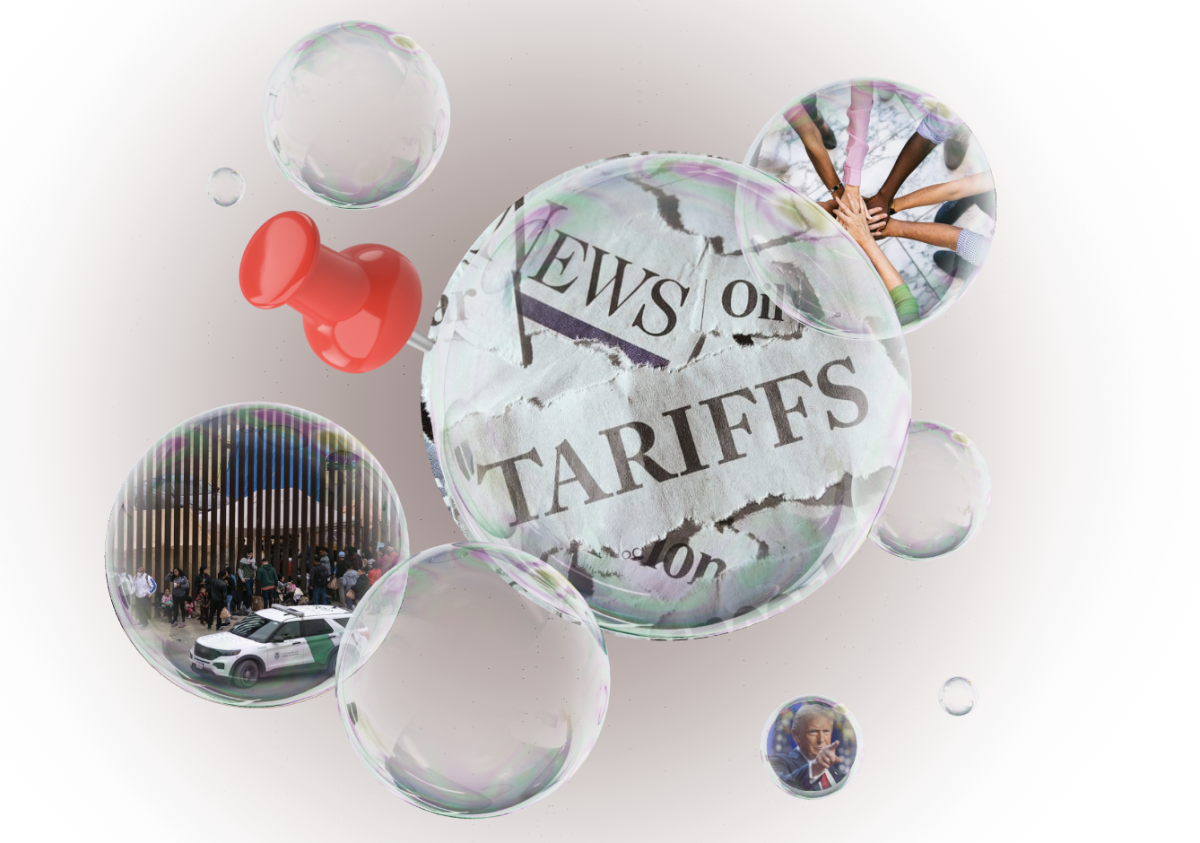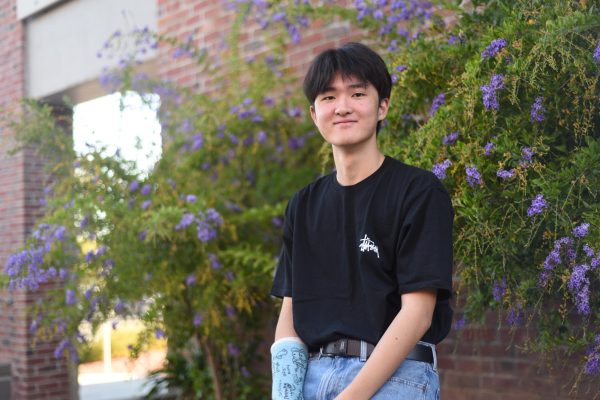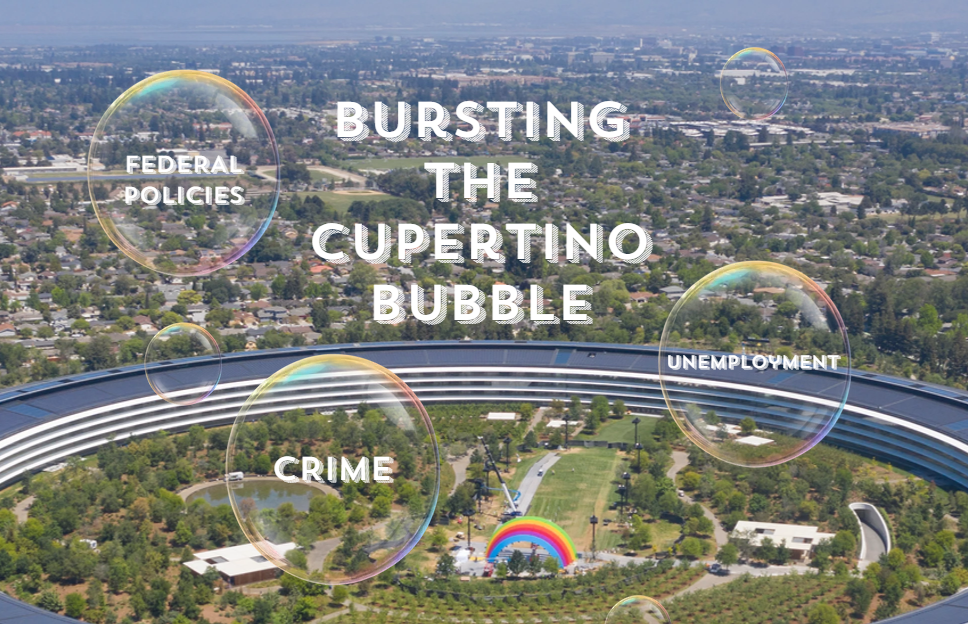In his first few months in office, President Donald Trump has already implemented a series of policy changes via 129 executive orders, including cracking down on illegal immigration to attacking diversity, equity and inclusion initiatives and implementing tariffs.
However, the Bay Area, and Cupertino specifically, has long been in a bubble, shielded from many of Trump’s policies due to its left-leaning views. For example, California’s SB 54 law or the California Values Act limits cooperation between California law enforcement and federal law enforcement agencies like Immigration and Customs Enforcement to protect illegal immigrants from being deported solely based on their status or a petty crime.
When Trump was first elected in 2016, 73% of Santa Clara county voters voted for Hillary Clinton, while only 21% voted for Trump. This democratic majority has let Cupertino remain in a bubble in the past; however, its bubble of safety may finally burst in a few significant ways due to the drastic effects of Trump’s executive orders.
Through Executive Order 14159, the Trump administration outlined its procedure to remove funding to sanctuary jurisdictions, which implement specific policies to limit local cooperation with federal authorities when enforcing immigration laws, and increase penalties for immigrants who don’t register as undocumented. To enforce this, the administration has increased employment in agencies dealing with illegal immigration, namely ICE and Customs and Border Protection.
In Cupertino and the surrounding area, a large part of the workforce are immigrants — in 2021, they made up 67% of STEM workers in Santa Clara County. Of the Cupertino immigrant population, 18% were undocumented in 2021 and 21% worked in professional services requiring degrees or licenses.Through these stats alone, even if direct impact remains unclear, our community undoubtedly contains the demographics targeted by Trump’s executive order.
The fight to resist Trump’s immigration policy in our community has been raging since his first term in office. During Trump’s first term, the technology industry opposed his views and practices against illegal immigration, with executives of Google, Apple, Microsoft, Facebook, Uber and more coming together to co-author a letter against Trump’s travel ban. At present, in efforts to continue this resistance to Trump’s federal policies, Santa Clara County, alongside San Francisco and other cities, filed a lawsuit against Executive Order 14159 to combat the restriction of general federal funding to the sanctuary jurisdiction of the Bay Area.
These major technology companies play a significant role in protecting Silicon Valley’s sanctuary status as a place to house immigrants and protect them from aggressive federal immigration policy, seeing as they make up two-thirds of major technology company’s employee force. Cupertino also holds sanctuary status as a city of approximately 60,000 residents, 55% of whom were born outside of the country.
In 2022, 124,343 H-1B visas were certified in our county, mainly for software developers and electrical engineers, valued in our community’s tech industry, emphasizing how legal immigrants are the backbone of our innovative industries. In this way, these companies have been able to support immigrants who help drive the American economy and position as a leader in innovation.
However, in regard to stopping illegal immigration from the southern border, ICE has reported 32,809 arrests within the first 50 days of the Trump Administration, almost equaling the arrests for the entire fiscal year of 2024. Of the arrests in 2025, 14,111 were previously convicted of crimes, while another 9,980 were said to have concurrent criminal charges.
However, despite the focus on the southern border, the sheer amount of arrests that have already taken place indicate that ICE isn’t prioritizing the physical safety of the illegal immigrant population, those who actively contribute to the Cupertino community, grouping them in with criminals. Also, ICE doesn’t disclose the severity of the criminal charges which they use as grounds for deportation and arrest, many of which could be petty crimes which have been historically used to target people of color.
ICE also claims that illegal immigrants can choose to self-deport and return legally. However, the legal process that ICE is referring to typically includes significant obstacles such as additional penalties, yearlong waiting periods or even permanent bans from entering the U.S. Cupertino residents are not necessarily safe from these same methods — it is important not to grow complacent in our sense of safety within the Cupertino bubble so we can protect our community.
Signed on Jan. 20, Executive Order 14148 overturned several of the Biden administration’s policies, most of which had significant emphasis on DEI programs. Trump’s focus on merit-based practices, encapsulated in Executive Orders 14151 and 14173, aim to uproot what his government sees as discriminatory practices.
In the tech industry, where companies like Google have been actively investing in DEI programs to make their workforce more diverse, its reversal has been viewed as a cause for concern considering the reversal of progress in balanced representation. Google has especially relied on DEI models to ensure that its hiring processes are more inclusive of historically underrepresented groups.
However, with these changes by the Trump administration and DEI policies no longer being enforced, many companies like Google, Amazon, Meta and Tesla have either scaled back or completely dismantled their DEI programs. Specifically, Google eliminated its diversity hiring targets and its DEI commitments from its annual Securities and Exchange Commission filings, indicating a general decrease in diverse hirings across the industry. For example, of the Technology Select Sector SPDR Fund’s top 10 holdings, 50% of the companies have publicly stated plans to scale back DEI initiatives since Trump’s initial executive order.
As a whole, Cupertino, along with the rest of the Bay Area, hasn’t remained in much of a bubble in regard to DEI initiatives. Despite the backlash against companies revoking their DEI programs, it seems companies are abiding by the political pressure and cost-cutting measures. However, this in turn could lead to a homogenized environment instead of a diverse workforce that has been a staple of Cupertino. The absence of DEI programs will also have an immediate effect of further marginalizing certain groups that have been historically discriminated against in hiring practices and in the workplace.
Adding to these complexities is the Trump administration’s goal of making U.S. consumers purchase American made goods. In order to accomplish this, Trump has enacted a series of executive orders which have placed increased tariffs on many countries.
He placed tariffs on Mexico, China and Canada to “hold them accountable” based on the reasoning that Trump wants to halt the threat of illegal immigrants and drugs that are smuggled across the border and reduce the difference in value of U.S. and overseas goods. Following this, there have been several additional executive orders that have changed tariffs on specific goods and varied the percentages against certain countries.
The tariffs have had the opposite effect of their intended purpose, as citizens have lost faith in American companies and domestic manufacturers. Specifically, after “Liberation Day” on April 2, which announced a universal 10% tariff beginning on April 5, the stock market underwent a significant crash as the Dow Jones Industrial Average (DJIA) fell over 4000 points within two days of the announcement. Other composites like the S&P 500 and NASDAQ similarly had a decline of more than 10% within the first week of April.
Cupertino residents, many of whom work within the technology sector and depend on technology in daily life, have felt the adverse effects of these tariffs. Since companies such as Apple are being discouraged from outsourcing labor and manufacturing to China due to more expensive import costs, they will be forced to either endure the tariffs or begin manufacturing domestically at far greater costs. The increase in costs that these companies undergo will be passed down to American consumers through increased prices.
The tariffs, however, have already resulted in increased prices across almost all industries. Specifically, everyday purchases such as groceries and other daily necessities like clothing have surged in pricing due to much higher taxes on imported goods.
Although the Trump administration aimed to stimulate the American economy and manufacturing, these tariffs have only fostered distrust among citizens regarding the administration’s policymaking. However, the administration has seemingly backpedaled on its objectives with a lift of tariffs on most nations for 90 days. This announcement did push the market slightly back up; however, due to the volatility of Trump’s policy making, it is undetermined how long this lift will last which has resulted in unstable retirement plans for many soon-to-be retiring workers.
As Trump continues to roll out executive orders, Cupertino residents have to take into account both the short and long-term effects of these developments, whether it be increased prices for daily necessities, loss of jobs or lack of security for immigrant communities. Nevertheless, it is worthwhile to remain vigilant and engaged with the political atmosphere because these federal policies directly impact local businesses, immigrants and the tech industry, which are all key aspects of Cupertino. It has now become ever more important for Cupertino residents to remain aware of the Trump administration’s policies by engaging in both national news to learn about Trump’s policy changes as well as local news channels which cover how his policies affect our community.












